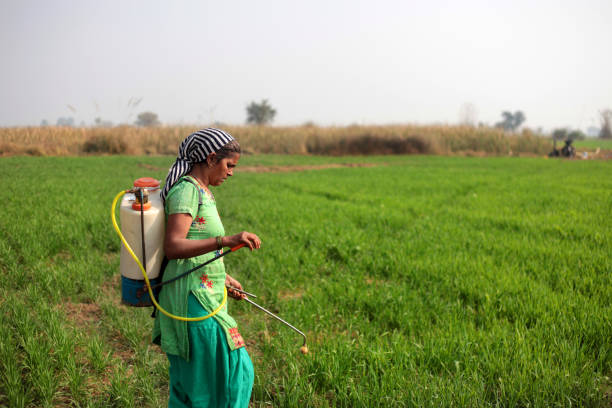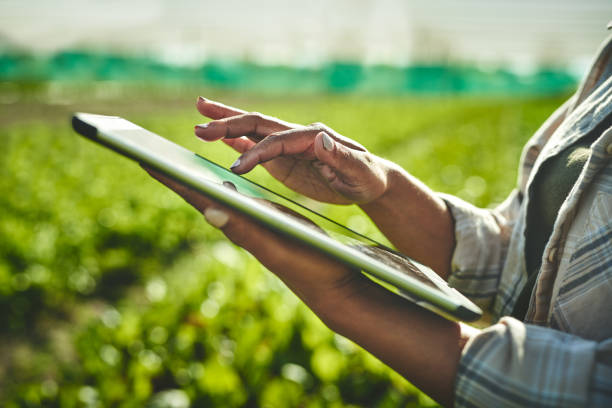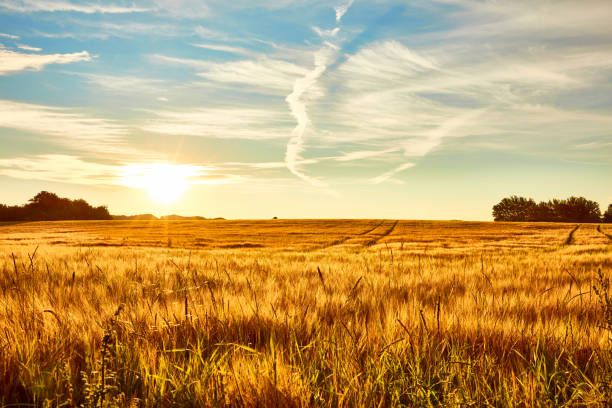Guide and Considerations for Accurately Valuing Farmland
Investing in farmland can be a terrific opportunity to live a life of land stewardship, but it is vital to keep in mind that it will take some time for the land to produce a return. For this reason, land loans are a terrific alternative for many farmers; they enable instant finance to acquire the property of your choice while giving you time to construct your financial strategy and plan for how your land can produce immediate and long-term sustainability. Investing in farmland may quickly become a personally and professionally rewarding adventure with the proper land purchase, maintenance, and attention to agricultural best practices!
Those who own, manage, or are considering investing in agricultural land must appropriately value farmland. A precise valuation of farmland is vital for both the seller and the purchaser, as it helps to guarantee that the sale is equitable and lucrative for both sides. This post will discuss the strategies and factors for appropriately valuing farmland so that you can make informed decisions when purchasing and selling agricultural land.
Recognize Different Farmland Types
Understanding the various types of available agricultural land is the first step in effectively pricing farmland. Generally speaking, farmland can be categorized into three groups: irrigated, dryland, and speciality farms.
The Irrigated Farmland
By augmenting natural precipitation with artificial irrigation systems, irrigated cropland maximizes crop production. These irrigation systems can be expensive, but they allow farmers with greater control over moisture levels and crop growing conditions, so enabling them to produce the highest quality crop possible.
Most commonly, this style of farming is practiced in regions with low rainfall or water access owing to drought or other environmental conditions. Diversifying cropping practices in such fields is crucial for any modern farmer attempting to survive in challenging conditions.

Dryland Farming
Dryland farming is a specialized form of agriculture used by landowners in dry or drought-prone locations to maximize the use of scarce natural water resources. This method takes careful planning and deliberation, since landowners must maintain soil health, choose drought-resistant crops, and position planting according to the likelihood of precipitation or snowfall during the growing season. Because of this, dryland farming is environmentally sustainable and enables landowners to produce fruitful yields even in arid climates.
Specialty Farms
Organic fruits and vegetables, grass-fed beef, free-range eggs and chickens, honeybees, artisanal cheeses, etc. are all produced on specialty farms, which are a unique sort of farm. As more consumers seek locally-grown food and ethically-raised meats and dairy products, specialty farms have become more and more popular.
Farmers that specialize in producing particular items may be able to demand a premium price for their products due to their unique offerings or specific understanding of agricultural operations that exceeds what is often offered in standard grocery shops and markets.
Consider the Farm's Location
Location plays a significant impact in determining farm property values. If the farm is closer to a major city, it may be more profitable than if it were located in a rural location. In addition, municipal restrictions and tax laws should be considered while making decisions regarding farm real estate.
Access to markets is also essential and must be considered while valuing farmland. All of these aspects should be considered when determining the value of a farm, as they can have a substantial impact on the farm's value and future chances.
Evaluate the Resources and Facilities
The determination of farmland pricing is a complex procedure that takes consideration of a variety of elements. Assessing the property's resources and infrastructure is a recommendation for maintaining high farmland values.
Water, power, and fertilizer are among the most influential factors in determining the value of farmland. In addition, roads, buildings, or other infrastructure on the property might increase its value compared to farmland without these qualities. Recognizing and incorporating these components into a farmland valuation plan is essential for obtaining an accurate estimate of the farmland's value.
When Evaluating Farmland Values, Consider Potential Development Opportunities
Potential development opportunities should be taken into account while appraising farmland. If the land is located close to a city, it may have the possibility for development or rezoning, which could substantially enhance its value. When assessing the property, it should also be taken into account if the land is situated in an area that is anticipated to increase in value.
Assess the Farm's Present Condition
Land deterioration should be addressed while appraising the value of farmland. After years of overgrazing and land mismanagement, it is normal for land to deteriorate. This land degradation can have severe impacts on land values, leading to a decline in land assets, output losses, and an increase in transaction costs. Food production and availability may also be affected.
Prior to making an investment, it is vital to consider land degradation and its associated costs in addition to the farm's physical condition, equipment, and interest rates.

Analyze Recent Market Tendencies for Agricultural Real Estate Values
Valuing farmland can be a challenging undertaking, and it is vital to understand recent market patterns in order to obtain an appropriate valuation. Analyzing national averages and taking into account recent sales in the area will give you a better indication of the current land market value.
Many farmers recognize that the capitalization rate is a crucial factor in determining the sale price of agricultural property, but many are startled to find that national economic trends must also be considered. Recent market developments have a substantial influence on prices, and examining these patterns through research should be the next step in calculating an accurate valuation.
Since farms require more land to produce enough food to meet rising demand, the rising demand for farmland also affects food costs. As a result, food costs have increased dramatically over time. This is especially true for essentials such as grains and vegetables, which are used in a wide variety of cuisines across the globe. In addition, additional transportation expenses involved with transporting these products might lead to higher food prices.
This information can provide crucial context and insight into a variety of factors that influence prices, including, for example, demand for farmland, supply dynamics, and future inflation forecasts. Many farmers can make more informed decisions regarding the sale of their farms if they take all of this into account.
Prior to Choosing Land Prices, Examine the Property's Financial History
Accurately valuing the property is a crucial step in the process of selling farmland. The following piece of advice on valuing farmland examines the land's financial history for significant insight. By examining the past selling prices of comparable properties and any previous tax assessments, you can acquire a better sense of the value of your property.
In addition, examining the property's present and previous uses can help create a clearer image of how it may be used in the future; this information is also crucial for accurately determining its value. Collecting all of this financial information enables you to make strategic decisions when selling or purchasing farmland.
Pay Attention to Environmental Factors
When valuing farmland, soil quality is a crucial factor to consider. The soil type, climate, and other meteorological events such as La Nina, as well as the land's topography, all influence its worth and must be considered. There may also be environmental constraints or risks that must be taken into account throughout the appraisal process. Potential purchasers can gain a comprehensive understanding of the land's genuine potential and make a well-informed decision based on a thorough evaluation of these factors.
How to Determine the Value of Agricultural Land Using Comparable Properties
The following piece of advice for valuing farmland is to determine the price using comparable properties. To calculate the price of a parcel of farmland, for instance, you must compare it to other comparable assets in the vicinity. Comparing the farm's size, features, and surrounding surroundings will help you determine the land's genuine worth.
Consider the Seller's Requirements
When determining the value of farmland, it is crucial to consider the earnings you or the seller intend to make. The importance of communication between buyers and sellers cannot be overstated, as each party may have a different conception of the value they seek to acquire or provide. It is crucial to be aware of the money involved in any transaction, as expectations must be met in order for both parties to realize benefits. This can impact the entire farmland valuation procedure in order to ensure fair transactions and profitable land sales.
Accurately assessing farmland is vital for people who own, manage, or are considering investing in agricultural land. You can ensure that your agricultural land is accurately valued by understanding the different types of agricultural land, considering the location of the farm, evaluating the resources and infrastructure, analyzing market trends, reviewing the property's financial history, taking note of environmental factors, calculating the value based on comparable properties, considering potential development opportunities, and considering the seller's expectations.
If you're interested to know more about this topic, be sure to check this blog post from Farm Plus Financial: https://farmloans.com/general-farm-news/how-to-value-farmland-accurately-tips-and-considerations/

